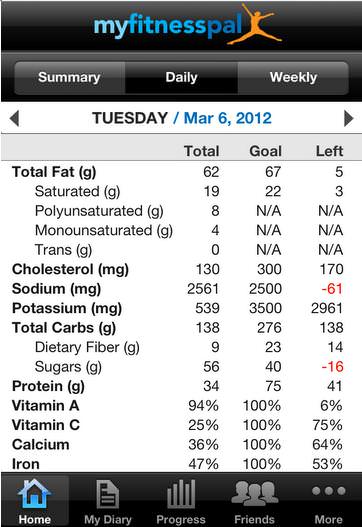

Problem 2 – You Over-estimate the Value of Additional Activity If you walk or run for exercise, you can count those steps and/or miles toward your baseline activity level if you want, but then you can’t enter them again as exercise. More than 23,000 steps or 10 miles a day is Highly active.10,000 to 23,000 steps or 4 to 10 miles a day is considered Active.1,000 to 10,000 steps or about 4 miles a day is Lightly Active.Fewer than 1,000 steps a day is sedentary.If you use a wearable fitness tracker like a Fitbit or Jawbone or even a low-tech pedometer or step counter, you can use that to help you select the proper category for your lifestyle. Unless you rope cattle 8 hours a day, your lifestyle probably does not qualify as “very active.” And guess what? Most people select an activity level that’s one or two categories higher than their lifestyle actually warrants. This is just about your daily activity level. This does not refer to how much you exercise - we’ll get to that in a moment. In order to calculate your baseline calorie requirements, you indicate your activity level: sedentary, lightly active, moderately active, or very active.

Problem 1 – You WILL Overassess Your Baseline Activity Here are three ways they tend to get it wrong. In practice, however, these “net calorie” calculations are inaccurate and misleading - and they are suckering people into eating too many calories.Īlthough diet tracking apps can help you get an accurate picture of your calorie intake, they are much less reliable in determining how many calories you burn. The general principle here is sound: The more you move, the more you can eat. But wait! I can take an evening run, log it into the app and now I’ve got 840 calories to spend on dinner! How awesome is that? Ideally, you don’t get to zero too early in the day. That number is based on your height, weight, age, sex, activity level, and your goals - that is, whether you’re trying to lose, gain, or maintain your current weight.Ĭalories are subtracted from your balance as you log your meals into the diet tracker over the course of the day. Here’s how these trackers work: You start every day with a certain number of calories to spend. Add to that the every-human tendency to take a mile when given an inch? Get ready for disappointment on the scale.

I thought “You’ve got to be kidding me! You’re letting people do THAT?” You see, I know the way the obese and overweight think. After all, there’s an old saying that “you can’t manage what you don’t measure.” And yet it seems to be backfiring.įrom the first I got my hands on the slick, food-logging apps like My Fitness Pal, Loseit and more I noticed something right away that bothered me – net calories.Īs a 20+ year wellness coach I laughed, but truly in a disgusted way, when I saw what they were doing. Lots of people use diet and activity trackers such as My Fitness Pal to log their food intake and exercise.


 0 kommentar(er)
0 kommentar(er)
